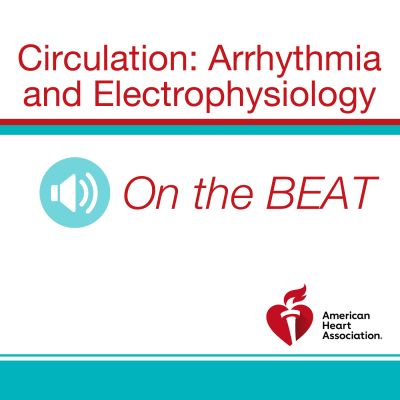Each podcast will include key highlights from the journal's current issue and a report on new research published in the field of arrhythmia and electrophysiology.
http://circep.libsyn.com/podcast
Circulation: Arrhythmia and Electrophysiology April 2019 Issue
Dr Paul Wang: Welcome to the monthly podcast On the Beat for Circulation: Arrhythmia and Electrophysiology. I'm Dr Paul Wang, Editor in Chief, with some of the key highlights from this month's issue.
In our first paper Lucas Boersma and associates examined the final two-year outcome data from 47 centers, in 1,020 patients receiving the left atrial appendage occlusion watchman devices. Their study population had a mean age of 73.4 years, with 311 having prior ischemic stroke or TIA, 153 having prior hemorrhagic stroke, and 318 having prior major bleeding. 49% had a CHAS II vast score of 5 or greater, and 40% had a HAS-BLED score of three or greater. Oral anticoagulation was contraindicated in 72%. During follow up, 161 patients, or 16.4% died, 22 strokes were observed or 1.3 per 100 patient years representing an 83% reduction versus historic data. And 47 major non-procedural bleeding events were observed, or 2.7 per 100 patient years representing a 46% reduction versus historic data.
Device thrombus was observed in 34 patients or 4.1%, and was not correlated to the drug regimen during follow up. P=0.28.
In our next paper, Anish Amin and Associates examined whether high voltage impedance and subcutaneous or SICD system implant position are associated with ventricular fibrillation or VF conversion success with a sub-maximal joule shock. In the SICD investigational device exemption study, a successful conversion test required two consecutive VF conversions at 65 joules in either shock vector. Sub-optimal device position was defined as an inferior electrode or pulse generator, or electrode coil depth of greater than three mm anterior to the sternum, based on chest radiograph. Of 314 patients who underwent SICD implantation, 282 patients were included in this analysis. There were 637 inductions to test defibrillation at 65 joules. 62 conversion failures, or 9.7%, occurred in 42 or 14.9% of patients.
Lower body mass index or BMI, and lower shock impedance, were associated with higher conversion success rate. Whereas white race was associated with lower conversion success rate. Sub-optimal position was more common in obese patients. Inferior electrode and greater distance between the lead and sternum were associated with a higher impedance. When appropriate system position was achieved, conversion failure was not associated with high BMI.
In our next paper, Je-Wook Park and associates examined the left atrial pressure after repeat radiofrequency catheter ablation procedures. Among 1,848 patients who underwent atrial fibrillation or AF catheter ablation, the authors measured the left atrial pressure, LAP, immediately following the transseptal puncture in sinus rhythm in 1,687 patients before De novo ablation, median age 59 years, 72.4% male and 72.8% paroxysmal AF, and in 142 with second procedures. In the same 142 patients, the degree of left atrial stiffness, reflected by LAPP, the difference between LAP peak and LAP nater, was significantly higher in the second procedure than in the De novo procedure. P
